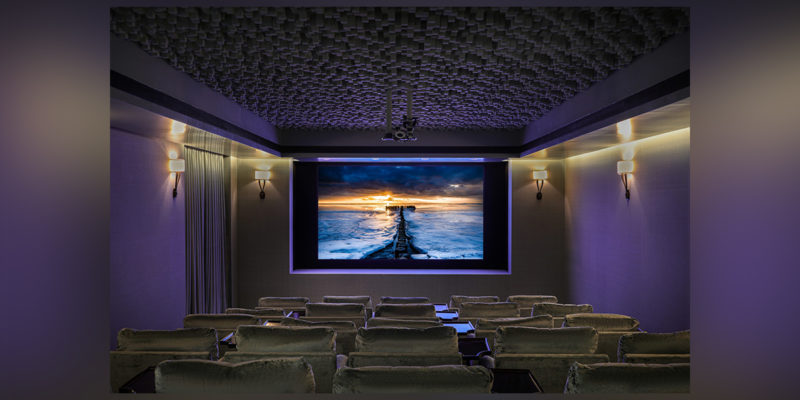The Terms “Home Theater” and “Stereo” are Long Gone!

It’s about time we got what we asked for. Residents in Central Oregon are tired of hearing the words, “home theater” and “stereo.” One local home owner stated, “I will go to the theater if I want to see a blockbuster on a 20-foot screen. And if I want a stereo, those are at Goodwill. But I come home to an Integrated Audio Visual System.”
Integrated Audio Visual System – What does this mean for the new home owner? The short answer is that you need to stop buying pieces and parts online to assemble the experience you are looking for. You need to find a local Audio Visual Integrator to listen to your needs and walk you through the 20,000-foot view. You need to know what needs to happen to accomplish a relevant AV system.
- Start with a firm foundation such Infrastructure AKA Network and other low voltage wire cabling. This is so important and I highly recommend you pay a local AV Designer to do this before you sign-off on ANY gear purchases. Make them explain it to you, too. Note: the AV Designer with not be the same individual as the sales person.
- Zero Wires! It is now possible to avoid those visible wires. And I don’t mean going wireless exclusively, but true cable management is possible. This really comes down to using the correct install methods based on hiring a Certified Technology Specialist. This means you can “Expect an Expert” to do the work. You can find this type of specialists at Audio Visual Bend.
- Two years is too long. Just today I listened to a customer say, “I just bought this 40” TV off Craigslist for $150 with a Blue ray player. They say they bought it a year ago so I got a deal.” The truth of the matter is that they bought a TV that has six months of value and in three months they will be walking through Costco, quoting the famous Homer Simpson line, “DOH!”
A Few Free Tips from Audio Visual Bend Experts:
Did you know that tech turns every two years? Moore’s Law is the observation that the number of transistors on integrated circuits doubles approximately every two years.
Disruptive technology is coming in the forms of:
Artificial Intelligence
Automated Everything
Internet of Everything
Virtual Reality
3D Printing
Biometrics & Digital ID
Read more on what this means for you at the internet article, “6 Disruptive Technologies to Watch in 2017.” It’s interesting stuff!
Acoustics, Acoustics, Acoustics! This is overlooked on every job. Here are my six points in brief, which I highly recommend you consider. I can go into more detail in person.
- Excessive Reverberation – High vaulted ceilings are a major contribution to this phenomenon. This can be corrected in the building design process.
- Floors – Hardwood or ceramic is not only going to reflect any sound generated within the space but will also magnify the sounds generated by the floor such as footfall or the scuffling of furniture.
- Walls – Walls generally constructed of gypsum drywall make up the majority of the boundary surfaces surrounding a space. They will reflect in the order of about 95% of the sound waves striking them.
- Ceilings – For large high vaulted ceilings, the owner might want to consider the use of a fabric covered false beam approach. A false beam design can be implemented where the beams are constructed of fabric-covered fiberglass resulting in a high degree of acoustical absorption.
- Furniture and Furnishings – In assessing the acoustical characteristics of your dwelling it is important to look at the furniture and furnishings.
- Impact of Noisy Dwelling Spaces – Large voluminous residential spaces that lack appropriate acoustical design considerations are bound to interfere with verbal communications.
If you purpose to plan, you will purpose to succeed.
Tony Sprando, Audio Visual Designer





